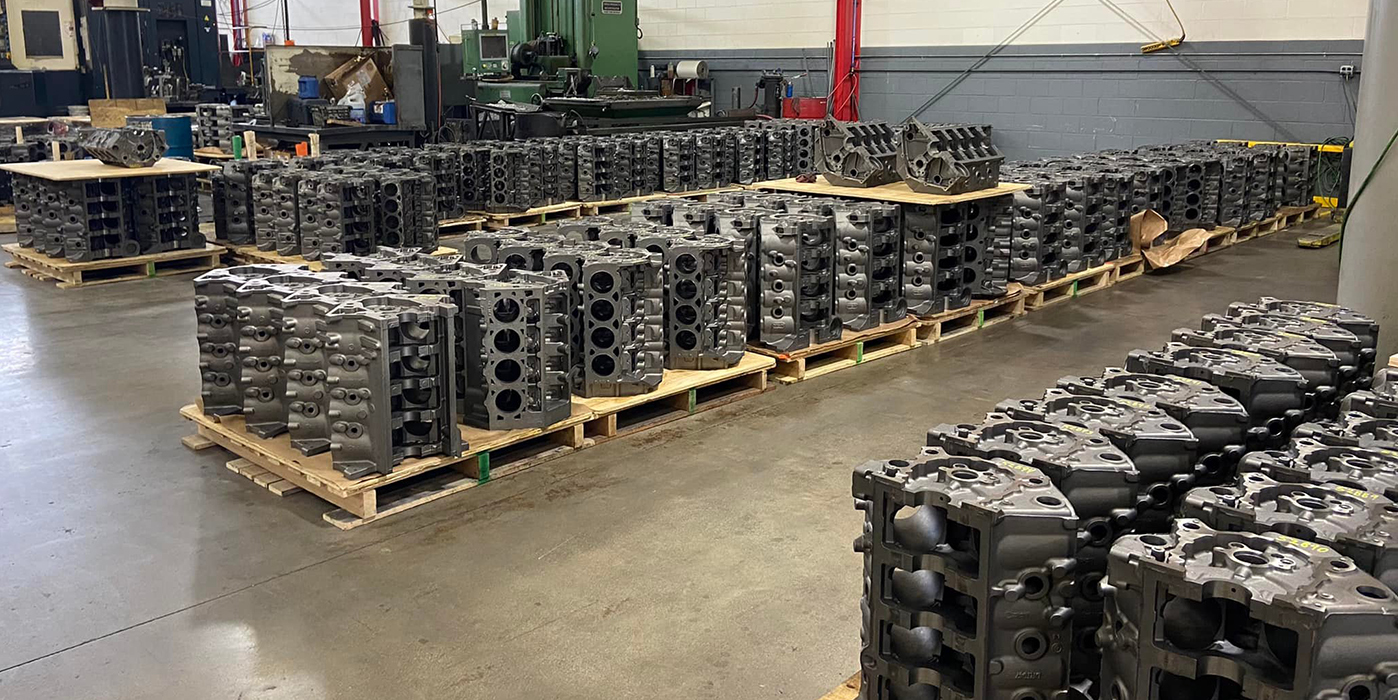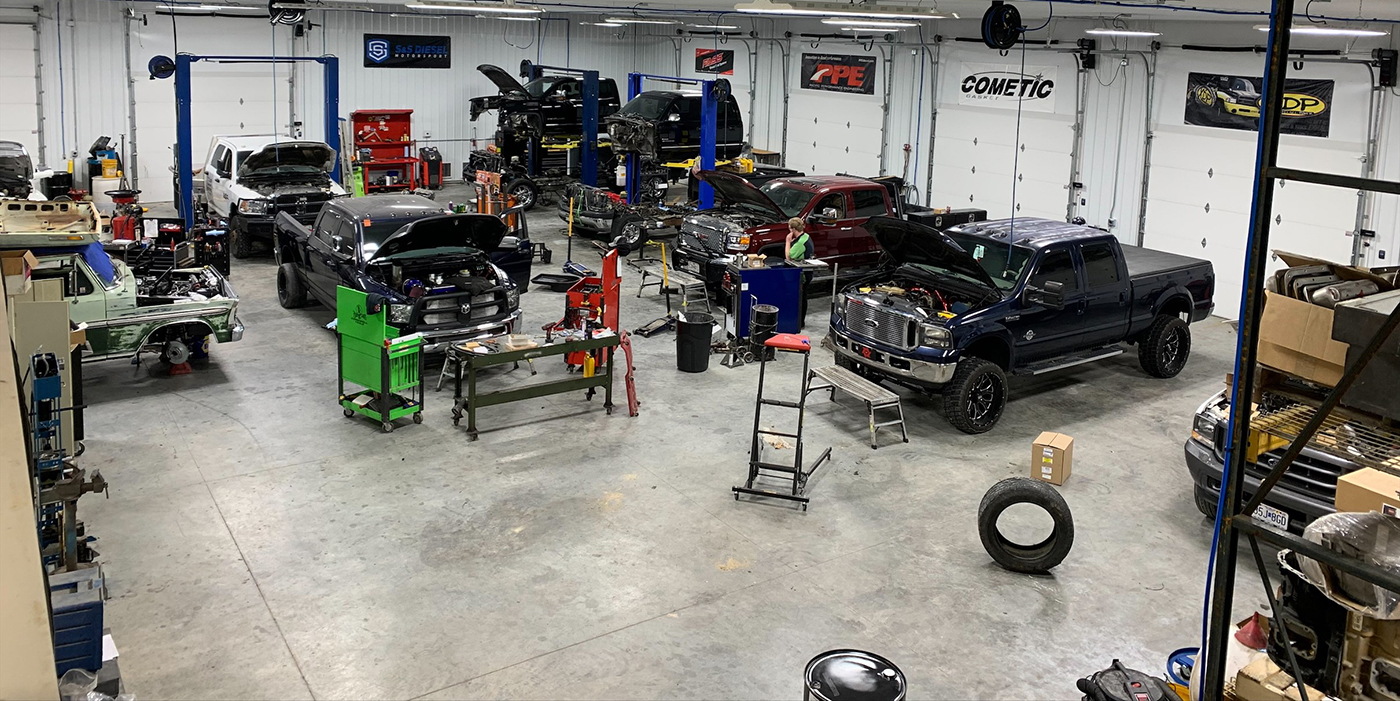 Businesses these days survive and grow very differently than they did 30, 20, even 10 years ago. What has been the biggest change you ask? The Internet. Websites in particular have changed how businesses and consumers interact and find one another. With the advancements in this technology, engine builders and their shops are no longer just competing against other shops around town, but rather every shop anywhere in the country. How can you expect to keep up with consumers if you’re missing that main ingredient they use to find you – a website.
Businesses these days survive and grow very differently than they did 30, 20, even 10 years ago. What has been the biggest change you ask? The Internet. Websites in particular have changed how businesses and consumers interact and find one another. With the advancements in this technology, engine builders and their shops are no longer just competing against other shops around town, but rather every shop anywhere in the country. How can you expect to keep up with consumers if you’re missing that main ingredient they use to find you – a website.
Now, with all this being said, a long-standing, solid reputation still goes a long way, especially when it comes to engine building, but that reputation can be broadcasted 100 times greater with the help of a website and the Internet. According to Engine Builder’s latest Machine Shop Market Profile, 56 percent of our readers don’t use a website for marketing and sales of their services. That needs to change. Here are some helpful tips to get your business into the 21st century.
Working With a Website

If you’re still operating a business without a website, I’m guessing you don’t see a ton of new customers coming to your shop. These days, a website is a must, even if it is the most basic of websites that simply lists your name, address and services. At least this will give you a web presence and allow potential customers to find you.
“There are a lot of great resources out there where you can build a small website to get started and build a presence online,” says Sarah Kollar, marketing manager at Hastings Manufacturing. “Having a presence online is so, so important. If people can’t search you and find you, they aren’t going to use you.”
If you’re looking to make a bigger splash on the Internet, you’ll likely have to reach out to vendors that can create a website for you. Do your due diligence and write out what you want your website to look like, how it should function, what goals it should accomplish, and then work with a vendor to create it. A nice website isn’t cheap, but the advantages of a website that reaches potential customers far outweighs the negative of the cost.
Now, for those shops that do have a website, when is the last time it has been updated? If you’re anything like Hastings Manufacturing, you may realize you’re due for a tune up.
Hastings is a piston ring manufacturer that last updated its website in 2005. Ten years in Internet time might as well be 100 years, and Hastings knew it needed an update bad.

“We completely hated our old website,” says Kollar. “It had outdated functionality and appearance. It wasn’t user friendly. It didn’t work on any mobile devices. It didn’t have a global presence, and our analytics were very poor on it. That’s basically why we said we want to completely redo our website. We wanted it to work on any mobile device and show that we have a global presence. We also wanted to improve readability and our organic search rankings.”
The company’s new website went live in March 2015 after it consulted its marketing firm. “They did all the work and mocked it up and then we reviewed it,” Kollar says. “In total it was about a four-august process, which I thought was pretty fast. We were able to tell them what we wanted it to look like and what our goals were, and they mocked it up.”
One of the big things on the new website is a ring finder, where customers are able to search for individual parts. Another big focus was a Tough Guy Tech Tips section that provides customers with all the basic information on Hastings piston rings – what to look for, how to install them, etc. “We wanted to provide that to our customers so that they can watch a video on how to do it rather than explain it on the phone,” Kollar says. “That became part of our frequently asked questions.”
Since Hastings updated its website in March 2015 it has seen increased traffic and improved usability. People are able to find things easily and use social media with the site. The bounce rate has gone down and people are staying on the site longer. “We are also seeing more of a global presence from countries we haven’t previously seen and we are doing a better job of tracking that through analytics and using that to change what we do next,” she says.
Obviously, an operation like Hastings is quite different than most engine shops, but the lessons are what can be carried over into your own website research.

One piece of advice Kollar shared for those looking to update a website is to make sure you have a website that works on mobile devices. “More and more people are using it and we see it in our analytics that people are accessing our website from their phones and tablets,” she says. “To not take that into consideration with your website is a huge miss. That is one of the smartest things that we did. It’s a step to the future. It may not be what everybody is using currently, but that number continues to grow every day.”
And speaking of growing every day, a website isn’t meant to sit stagnant after it has been created. A well functioning website is one that gets constant attention and its interaction with consumers is monitored by the shop.
“Our attitude towards our website is it’s a living being,” Kollar says. “It will always be updated and changed. We constantly want to add content and be user friendly to help people find what they need. You have to keep updating your website so that it stays fresh.”
Building an Online Reputation
Once you have a functioning website, or if you’ve had one established already, you’ll want to make sure you’re keeping in touch with what people are saying about your business online – it’s called Online Reputation Management (ORM).
When’s the last time you Googled your shop? If you don’t have a plan in place to monitor and manage your online reputation, it is time to take action. An overwhelming majority (79 percent) of consumers trust online reviews as much as personal recommendations. The perception of your shop in the eyes of the majority of your prospects is truly only as good as your online customer reviews.
An ORM strategy is a key component of your shop’s digital marketing strategy, and getting started is easy. Just follow this three-step process to jumpstart your ORM efforts.
Step 1: Conduct an Online Audit

If you haven’t been listening, it’s time to tune into the online chatter about your engine shop – prepare yourself for the good, the bad and the ugly.
Search your shop’s name, any nicknames and common misspellings on:
• Google
• Bing
• Yahoo
• Facebook
• Twitter
• Google+
• Yelp
• The Better Business Bureau
How’d you fare? If you consistently receive negative comments about the same issues over and over again, it may be time to examine those facets of your shop operations. However, in most cases, negative online reviews can be effectively managed and actually turned into stories of customer service success, which brings us to…
Step 2: Clean Up Your Online Reputation
Negative reviews are bound to happen, but left unmanaged, they can present a poor online image for your shop, which is sure to negatively affect your bottom line. Here are six rules to keep in mind as you manage negative reviews:
Don’t retaliate: Receiving a negative review is really frustrating and oftentimes very personal. Your first instinct may be to give the reviewer a piece of your mind. Don’t do it! Step away from the keyboard, get a cup of coffee and calm down. No one likes to be on the receiving end of a negative review. However, even if the reviewer is wrong, you can’t bad mouth, yell or curse at them. If you’re solution-oriented, things will calm down soon enough. And, sometimes, your loyal customers and community will come to your defense.
Do not delete the post: Show the quality and professionalism of your shop by addressing the problem. Admit your faults, fix them and carry on.

Be real: Respond to the reviewer just as you would if they were standing right in front of you. When you respond to negative reviews, convey in writing that you are committed to finding a solution to better serve that customer. Reach out to them by providing your direct line or email address. Ask for more details and invite them to have a conversation with you directly about their experience. Take the time to understand their point of view, so you can clear up customer dissatisfaction.
Say something: Whether you receive a negative or positive review, post a public response. The lack of a response to a negative review conveys to readers you’re not engaged online and, as a result, the review will hold more merit in the user’s mind. Always respond to a negative review with a positive statement like, “We pride ourselves in 100 percent customer satisfaction; we have contacted this reviewer to address their experience at our shop.”
Realize that some people are just unhappy: Know that no matter what you’ve done to try to rectify a situation, a negative review may be the unfortunate result if you just cannot make that customer happy. It will happen. Apologize, express regret, learn something from it and move on.
Ask your best customers for reviews: Diminish the impact of negative reviews by adding legitimate positive reviews. In our busy world, happy customers forget to take the time to share their experience, yet most of them will happily do so if you simply ask. Some shops offer customers an incentive to post a review, which is another proactive strategy to consider.
Step 3: Take Advantage of ORM Tools
Monitoring your online reputation doesn’t have to be a full-time job. Take advantage of the following ORM tools to act as your online eyes and ears.
Google Alerts: Google Alerts is one of the most effective tools for online reputation management. Set up alerts for any search terms you want, such as your shop name or targeted phrases relevant to your niche, then specify the types of results you want and how often. You can even get alerts as mentions occur for real-time online reputation management. Google sends alerts directly to you in an email digest, so there’s no ongoing legwork involved. The best part? Google Alerts is free.
SocialMention: Another great free search engine that scours the social universe for mentions of your shop name or any other search phrases you want to track. A pro is that the results are really detailed, with a breakdown of the sources and users, ratings of how positive or negative the conversation is, and its overall reach. A con is that SocialMention doesn’t offer automated alerts, so you’ll have to actively check your dashboard at regular intervals.
Following these strategies will help you maintain a healthy online reputation, and your website will flourish with activity. And, those new customers will be eager to visit your shop.













